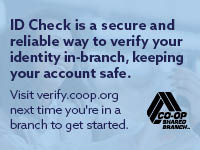You can make your own budget worksheet using either a pen and paper or a computer spreadsheet program. Think of your budget in terms of two things: money and time. Money, of course, is divided into its own two categories: Income and Expenses.
Follow these steps to make your budget worksheet:
- List your income in a vertical column down the left side of the page. Think of all the sources of income (including paychecks and interest) that you receive. Also, consider how often this income becomes available to you. For example, are you paid weekly or every other week?
- List your expenses below your income in that same column. Begin with major expenses such as a car payment, car insurance, food (including school lunches), clothing, and entertainment. Include all expenses, whether you pay in the form of a check, cash, credit card, or the amount is deducted from your credit union account. Remember to include any finance charges, such as interest on your auto loan.
- Now, list the related timeframes in a row across the top of the page. For instance, does the expense or income occur weekly, per paycheck, monthly, quarterly, or yearly? Is the expense tax-deductible? If so, add a heading for this in your horizontal row. When you are finished you should have the beginning of a grid or chart. Use this as a worksheet to help you categorize and plan. When you first start using your budget worksheet, you might find that you change it often. That’s good! Your worksheet should be a working document.
- Now that you have a “skeleton” worksheet, add anticipated expenses. Are you planning to go to college or participate in a wedding (as either a bridesmaid or a groomsman)? All of these require that you spend a lot of money. (Hint: Anticipate that you will have to spend more than you’d prefer, and budget accordingly. It’s better to be prepared than shocked.) You can also consider anticipated sources of income, such as the yearly birthday check from your Aunt Mildred. Be careful, though; don’t spend the money before you have it.
- Don’t forget the “small stuff”! Do you buy soda pop or special coffee, eat lunch out, or buy snacks from the vending machine? If so, keep track of how often you do—and how much you spend. All of these purchases add up throughout the week, the month, and the year. So budget for these, or do without!
Remember: Use your budget as a tool to help you achieve your goals. Once you set up your categories and make it a point to record the appropriate dollar amounts, you’ll see how easy it is to continue recording your income and expenses.
The most difficult part is getting started. But once you have your plan in place, you’ll recognize the power of the information that you have at your fingertips!


